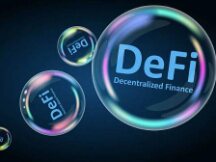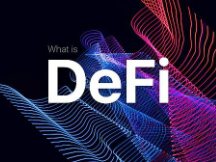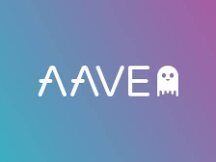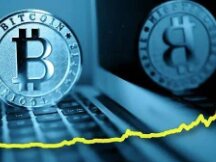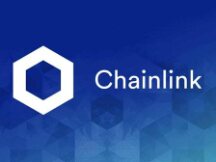Why the “financial decision” affects major financial risks
Recently, the Financial Institutions for International Conference (BIS) announced a teleconference for the financial services sector (DeFi) an "illusion of decentralization" and warned of the risks that the rapid development of DeFi can create.
DeFi uses cryptocurrency and smart contracts to provide financial services such as trading, lending, and blockchain investments, and its advantage is that it is not dependent on current financial resources. In other words,DeFi provides financial services that are consistently similar to financial services when it comes to budgeting.
DeFi has been growing rapidly since 2020, but it comes with significant financial risks, so caution should be exercised. Beside,The DeFi system is very robust and competitive and does not have a buffer machine to handle external interference.on another side, many stable coins widely used in DeFi are not really "stable" and carry different water and hazard operations. At the same time, DeFi has a high level of anonymity and is easy to use by illegal organizations.
Overall, DeFi is now an independent version of the traditional financial process, and if the link with the traditional financial process continues into the future, the risks will be significant. has a greater impact on financial security and needs to be addressed and addressed. Timely evaluation.
* This phrase is part of the CF40 Quick Guide.
What is DeFi and how does it work?
What is Defy?
DeFi, or Decentralized Financial, is a joint venture between Bitcoin and Ethereum, blockchain and cryptocurrency represented by smart contracts.
First, DeFi is a crypto financial system model.Depending on whether or not they are crypto assets, financial processes can be divided into traditional financial processes (without crypto equipment) and crypto financial processes. for,Depending on whether you trust mid-sized financial companies or commercial institutions, crypto financial systems can be divided into DeFi (non-trust) and CeFi (financial intermediary) (see link for details).
Second, the basis of DeFi is "distribution".DeFi uses cryptocurrencies and smart contracts to provide financial services such as securities, loans, and blockchain investments, but does not rely on intermediary financial companies, middlemen, or commercial establishments.In other words, DeFi provides financial services similar to traditional financial services at the end of a financial allocation.
Third, DeFi also has a high level of anonymity.With DeFi Business (loan), both parties can enter the business directly, and all contracts and transactions are closed on the blockchain (on-chain), and the data This is difficult to identify or discover by third parties.
Teem caij: crypto financial systems versus traditional financial systems

How does DeFi work?
DeFi has two pillars: fixed funds represented by Bitcoin and Ethereum, and smart contracts that facilitate trading, lending, and investing.
First, Stabilitycoins are the primary means of transferring money for DeFi users.Stablecoins are cryptocurrencies created to exchange the value of fiat currencies (such as the US dollar), play a key role in DeFi, play a key role in supporting the exchange of funds between the platform and users and connect cryptocurrencies to the crypto financial system. .. always have a financial system.
Second, smart contracts play an important role in medium-term financial exchanges and exchanges such as banks that provide financial services to businesses, lenders, and investors.
For example, in industry, competitors are often competitive with automated market makers. In order to protect the default loan portfolio, smart contracts can be terminated when the borrower's mortgage rate falls below the original rate (usually 100%). For example, if a person borrows 5 BTC from DeFi with 1 BTC as collateral, but their own account's asset value is less than 5 BTC (like 4.5 BTC), the smart contract will lose the collateral and be automatically wound up. ~
DeFi has grown rapidly since 2020.
Since 2020, DeFi has grown rapidly on strong earnings, large loans and capital.
First, the size of Stabilitycoins has grown exponentially.The fixed coin size has grown steadily since mid-2020, with the main coin's market value hitting $ 120 billion by the end of 2021, while the largest MMF is at a standstill at around $ 200 billion. .
The second is the new increase in DeFi platform libraries.Due to anonymity and the huge change in asset values of private cryptocurrencies, DeFi loans are often overdue, reaching $ 20 billion by the end of 2021. Some platforms also offer loans. . The platforms raised around $ 5.5 billion of these loans from mid-2020 to the end of 2021.
The third is the gradual increase in DeFi investments.The development of DeFi loans also supports the development of applications similar to those in traditional financial markets. The DeFi investment wallet follows a pre-investment decision, which collects money from investors and automatically converts it into a cryptocurrency lending platform to make money. At the end of 2021, the two main investment differences are around $ 10 billion.
DeFi also has intermediate functionality.
There is a risk of "integration"
DeFi likes to give people the illusion of total decentralization, but the opposite is true. Because the algorithm cannot predict all possible situations.DeFi systems inevitably have some level of control.
First, all DeFi platforms have a central management platform.The concept of governance is usually the platform for development, and the concept of governance includes how to set up strategic concepts and functions. Management generally depends on the number of holders in a fraction that votes for a commodity like a commodity. This is similar to the behavior of members involved in business management.
Second, depending on certain internal configurations, the decision-making process may be focused on the largest holders of securities.For example, some blockchains offer freebies based on the number of stablecoins they hold, and the higher the hold, the higher the reward. Additionally, many blockchains distribute a significant portion of their stablecoins to insiders resulting in a bigger issue in the middle.
Finally, the intermediate plans included in the practice lead to a "repair" of some accounts which may contain large volumes.
One isA small amount of money holding such sums of money can be combined to gain business benefits through blockchain transformation.
of themYou can make fake transactions with your own money which increases the fees paid by other traders.
3 isThere may be specialized trading strategies to achieve better results, such as "early trading". However, although “preventative transactions” in existing funds can be penalized by regulators, regulatory measures are insufficient in DeFi.
DeFi has an obvious weakness.
DeFi is still in its infancy and has a similar weakness in providing financial services similar to traditional financial procedures. However, it is less stable due to the higher wattage and other features of DeFi.
First, DeFi marketing is characterized by high effort and efficiency and a lack of procedures to respond to external interference.
First, the DeFi comparison is important for two reasons. During this time there were two banks.Loans from one business can be reused as commodities for another business, directly increasing leverage.. On the other hand, the leverage effect of trading derivatives on decentralized markets is greater than that of traditional regulated exchanges.
Second, high leverage in the cryptocurrency market undermines procyclicality. In other words, for example, higher energy consumption, higher inflation will lead to higher profits and economic benefits, which will lead to higher prices.
Third, DeFi relies on recognition of ownership (proprietary assets) and is excluded from traditional financial management and management, without the necessary procedures in the face of outside interference. .
For example, in September 2021, crypto assets were depreciating, forcing various works and loans on DeFi platforms to be completed. to earn.
The second is that the so-called "stable currency" is not really "stable" and that there are conflicts of interest and liquid risks.
First of all, the ease of stability parts depends on their design process. For example, fixed income coins that are backed by secondary securities such as banknotes do not have the principal amount of a mortgage asset.Risk of liquidity asymmetry; A fixed amount of money supported by a commodity, such as cryptocurrency, the value of the asset may be less than the value of the fixed face value.market risk. Oversizing offers the best compensation for this risk, but if the market does not change it will be difficult to hedge.
Second, volatility and market risk increase investors' risk of selling. The success rate of a stable coin depends on the level of investor confidence in the value of the asset, and lack of transparency and oversight can undermine confidence. The mind is simple. When investors are skeptical about the quality of an asset, they are initially encouraged to sell a stable currency in exchange for a fiat currency (such as the US dollar). This sale can increase productivity and make the product more affordable.
Third, although DeFi is the essence of traditional financial freedom today, in the future, relationships can be further improved and the benefits of DeFi on the financial agenda will always increase.
For banks, greater oversight limits their involvement in the cryptocurrency ecosystem.. In terms of assets, bank loans and bank investments have been low risk, and since the end of 2021, the big banks have been investing in cryptocurrency companies, respectively between $ 150 million and $ 380 million, which is only 'a fraction of the total. Treasure. Investment. In terms of spending, some banks may get their money through DeFi, and the securities may contain bank accounts or business information. Thus, a stable financial market can lead to financial losses for banks, similar to the impact on the financial market.
Non-bank financial institutions, primarily family offices and hedge funds, have embraced DeFi and the cryptocurrency industry in general.. The crypto assets they have are expected to grow from around $ 5 billion in 2018 to $ 50 billion in 2021.
political advice
Although DeFi is still in the early stages of development, DeFi could play an important role in the future financial industry as improvements in blockchain scalability and large-scale tokenization of existing assets have been made.Since the main issues DeFi faces today are similar to traditional financial procedures, existing policies may be submitted for review.
One is that oversight of DeFi operations must adhere to the “same risk, same rule” principle.These policies allow DeFi participants to take advantage of competitive rates. In order to prevent risks and the spread of stable results, regulators can learn from the relevant rules of current banking supervision, measures to be strengthened for effective management of investments in risk management and international payment management standards. risks. Fair and unethical business associations must embed DeFi responsibilities into governance.
The second is that DeFi is not fully decentralized, making it a legal entity.The DeFi platform consists of a group of people responsible for deciding and completing the use, management or membership. At the heart of oversight are stakeholders and the administrative consensus they followed, enabling regulators to get involved in the DeFi issues involved in Monitoring and managing risk before the DeFi ecosystem becomes important. Getting them under control as soon as possible will help ensure that new DeFi operations are well funded across the board.

Scan QR code with WeChat


